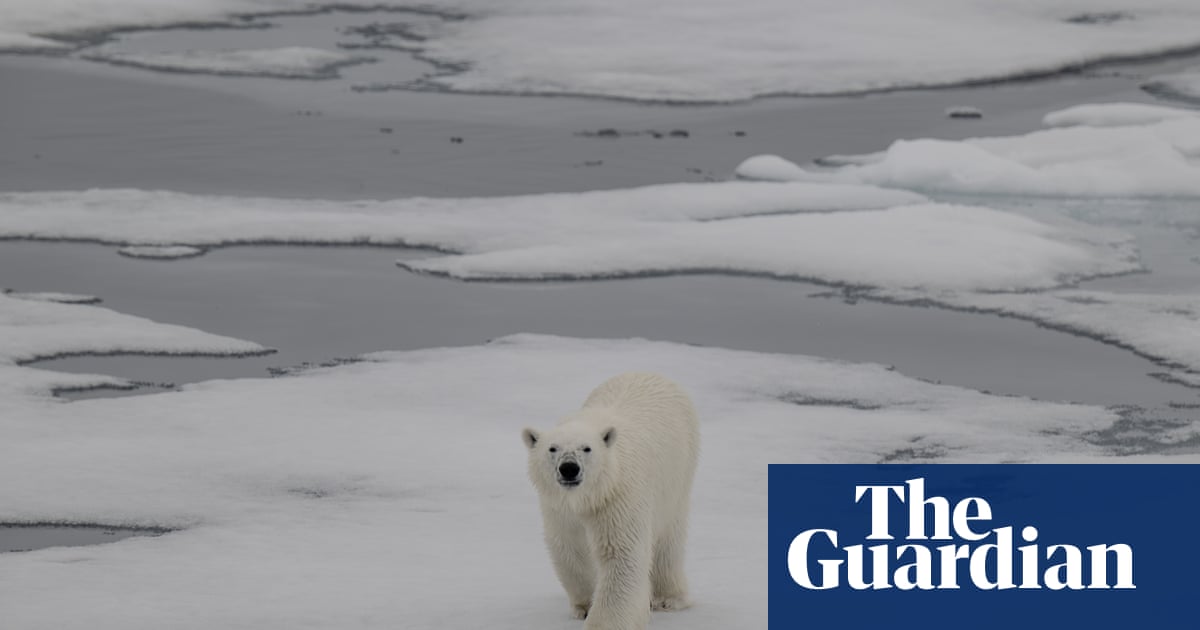A polar bear has been killed by bird flu as the highly contagious H5N1 virus spreads into the most remote parts of the planet.
The death was confirmed in December by the Alaska Department of Environmental Conservation. “This is the first polar bear case reported, for anywhere,” Dr Bob Gerlach, Alaska’s state veterinarian, told the Alaska Beacon.
It was found near Utqiagvik, one of the northernmost communities in Alaska, two years after this latest strain was detected in North America. Gerlach said it was likely the bear was scavenging on the carcasses of infected birds.
. . .
The current outbreak of the highly infectious variant of H5N1 – which started in 2021 – is estimated to have killed millions of wild birds. Globally, thousands of mammals have also died of the virus, including black bears and brown bears. Bald eagles, foxes and kittiwakes are among the species to have died of the virus in Alaska in recent months.



I would really appreciate help processing this.
The bird is sick, bird dies, bear eats bird, bear dies.
It shows that this particular influenza strain can infect both bears and birds.
Wash your hands, stay home if you’re sick, don’t eat birds that have died from influenza.
Ok, but… polar bears eat birds?
Polar bears aren’t picky where their calories come from and they need a lot of them.
Also we should take into account the lack of sea ice which means the bears can’t hunt marine food sources.
Yes, pretty much anything that is available.
https://polarbearsinternational.org/polar-bears-changing-arctic/polar-bear-facts/diet-prey/
deleted by creator
If only AI summaries were half as good as this.
And if you’re a bot… fucking bravo.
deleted by creator
Polar bears are birds.
In seriousness I don’t know if this is fucked up or just something that happens sometimes.
Viruses can jump between species , especially if their target proteins are non-specific. It’s not necessarily rare, but nonetheless destructive.
deleted by creator
Lol, polar bears aren’t real. :-P
Wait I thought birds wer… ohhhh
That might be true in the future.
Gulp, like anyone I do enjoy being right, but dayum in this case I very much hope that I am wrong!?!? :-P
If the bird flu can penetrate the Arctic it can penetrate the Antarctic. If that happens we’ll lose a lot of penguins, far more than we can “afford”.
A lot of penguins aren’t in the Antarctic, so it may already be spreading through populations in places like South Africa and the Galapagos Islands.
(emphasis added)
This entire article is clickbait (or at least not “news”) b/c while this may be the first time that a POLAR bear (reportedly) bit the dust, that is not saying really anything at all that was not already known.
That said, it does keep the fact that these viruses are real and have implications for human health & our economy (e.g., egg prices at grocery stories) in our cultural consciousness.
It’s not clickbait.
They’re aren’t saying that it wasn’t thought possible for the virus to infect polar bears. It’s news because the virus has reached a vulnerable species in a highly vulnerable ecosystem for the first time. That was predicted previously but not known until now.
Begging your partdon, but that seems to not be true? Even the short summary of the article acknowledged that it had already previously reached bears, animals in Alaska, and vulnerable species (bald eagles are still protected), and a quick internet search found this article that says that H5N1 specifically was known to infect polar bears a month ago, from a sample collected two months prior to that.
The only part that is novel is that the polar bear died this time. Except without knowing comorbidity factors, we cannot even say that it died “from” H5N1, nor learn anything at all about the severity of H5N1 in polar bears from this single isolated incident.
Anyway, thank you for explaining - people were downvoting without doing that and I appreciate you stepping up!:-)
Pretty sure that’s the same bear. Utqiagvik is the largest city in North Slope and one of just a few cities in the Arctic. The virus was detected 3 weeks ago but we don’t know when it was reported on that USDA site. That still makes the detection in polar bears and in the Arctic very recent. That information was probably only publicly available more recently than 3 weeks ago.
The earliest reporting I could find was 3 days ago in Alaskan press and earlier today in nonlocal reporting.
I still say it’s legit news, and not click bait. Appreciate the civil discussion though!
I probably was too brief - I did not intend to suggest that it was “fake news” or anything, just that the novelty was of an extremely narrow and specific kind. In looking around the internet at some journalism lingo, “churnalism” comes somewhat close to what I meant. Basically we have this 24/7 news cycle by for-profit companies that in an effort to maximize the stock dividends of their investors must spit out new content every minute of every hour of every day, regardless of how “important” that news is. Which isn’t to say that H5N1 being deadly is not news-worthy! Though I am suggesting that all these articles on this precise subject matter (of this single polar bear having died from it) seem to have borrowed from the importance of being more deadly world-wide, in order to sell their stories about this singular individual bear.
Next we could have an article on the second polar bear to have died from it, or the third, or perhaps from the first female polar bear (or male, whichever is the opposite of the earlier one), or the first non-Alaskan polar bear to die from it etc. And while each new one can technically be “correct” and “novel”, I would argue that at some point it is no longer “news-worthy”. Yet apparently in this case I would be wrong, b/c some people seem very interested in this new fact!:-P
Come to think of it, it probably is b/c polar bears are cute. So rather than “clickbait”, I probably should have said that it is “sensationalist news”, meant more to shock and awe and “entertain” (even if in the negative sense) than to inform.
And thank you in return for the same:-).